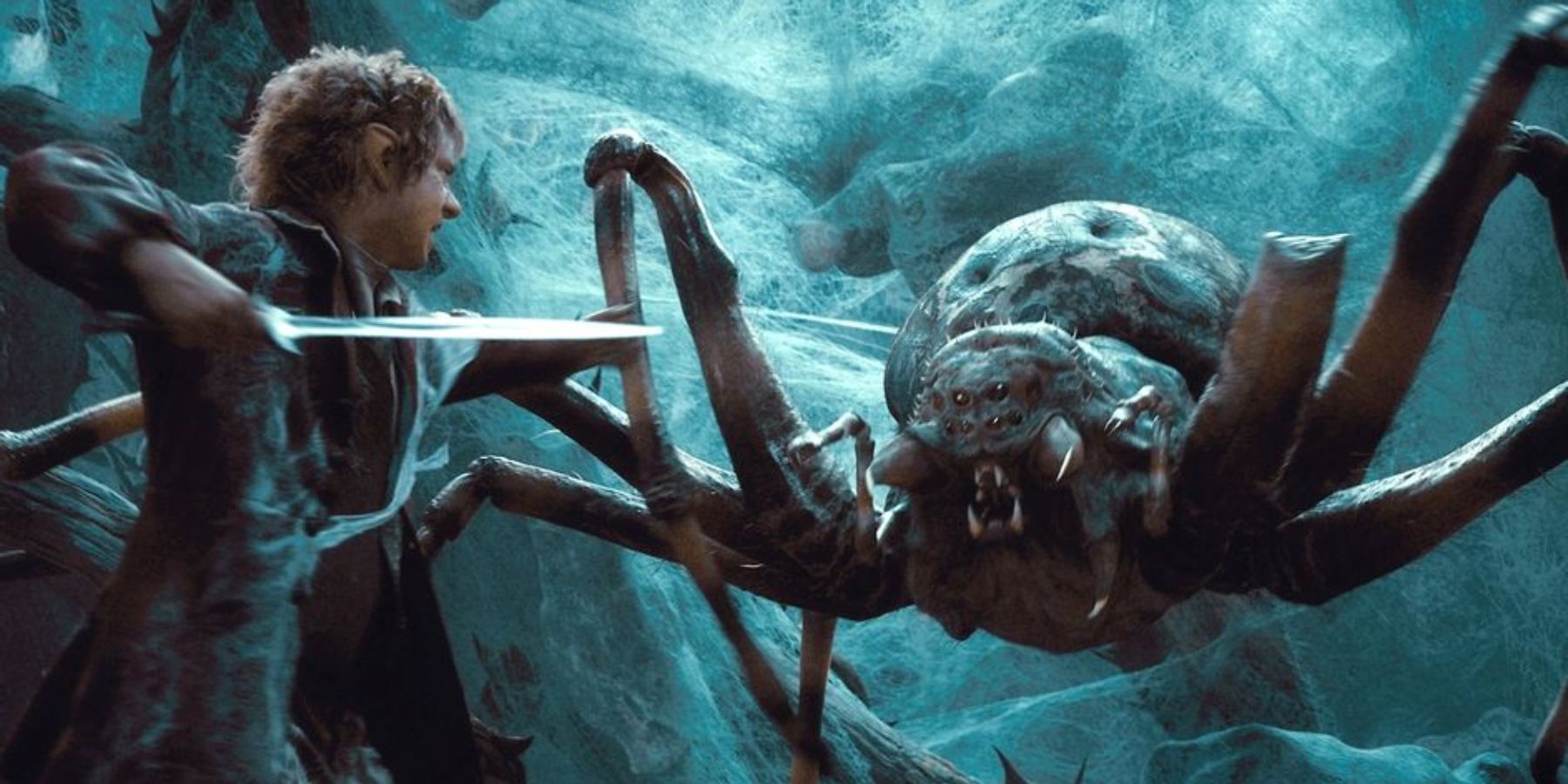
Many of these creatures have been brought to the screen in some form or another, be it through films, TV shows, or video games based on Middle-Earth, often quite effectively. But Tolkien’s work goes beyond The Hobbit and The Lord of the Rings. He wrote a lot of lore for his world, which included some truly fascinating monsters. Much of this is untouched by any existing media, with only fanart to visualize Tolkien’s prose. Some of these monsters are even greater than the ones seen in Peter Jackson’s movies, and could have a lot of potential to being put on screen.
Ancalagon the Black
The Biggest and Meanest of Dragons
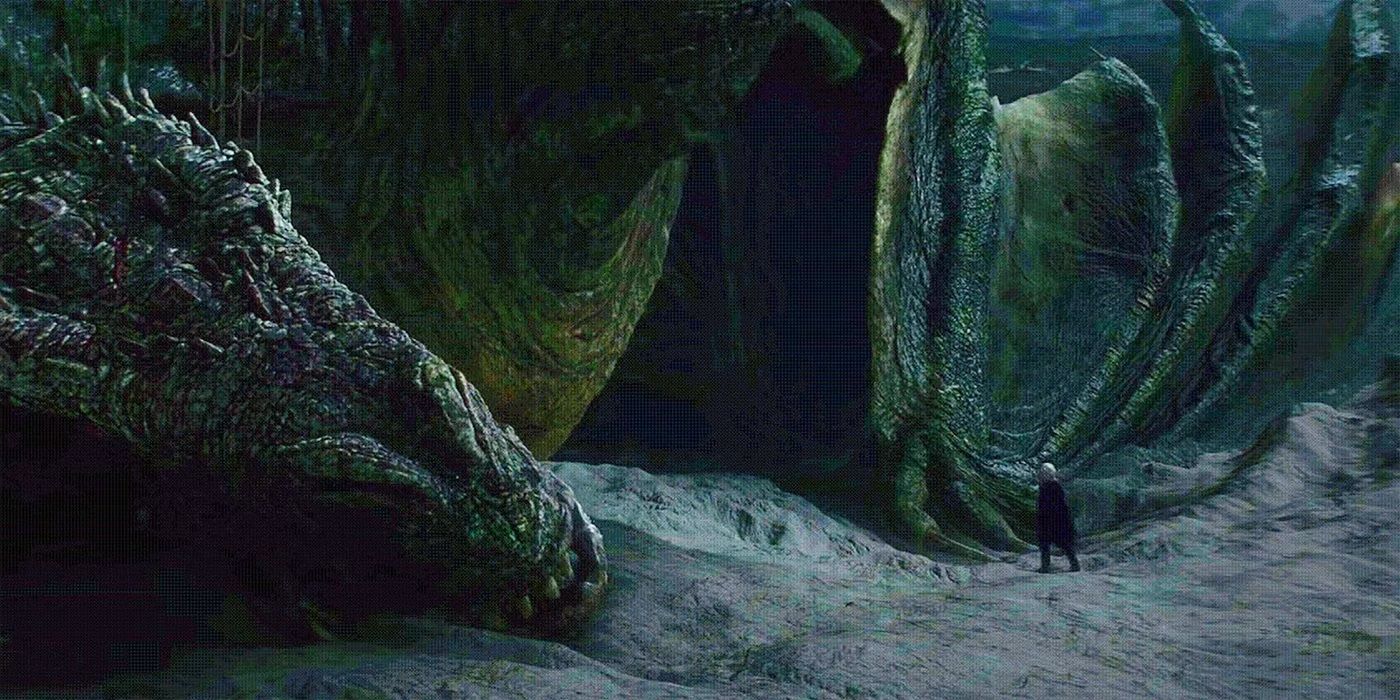
Smaug was built up as an imposing enemy, not only massive but also intelligent. When he is the last of the Great Dragons (the ones made by Sauron and used in war), he certainly seems like a force to be reckoned with. However, compared to some of his peers, Smaug was actually on the weaker side, especially when compared to Ancalagon the Black. This infamous dragon was huge, the largest (winged) dragon recorded in Middle-Earth’s history. The exact measurements are disputed, but he was said to be the size of a mountain. He was supposedly big enough that, when he was finally slain, his falling body destroyed Middle Earth’s highest mountain range. But like many dragons, it was not just strength that made him so terrifying. He was not only intelligent, but a capable leader who commanded an entire army of dragons, which is no easy feat.
Ancalagon the Black would have been dead for some time by the events of The Hobbit. Tolkien himself only recorded the dragon’s part in a single battle during the War of Wrath at the end of the First Age, leaving anything else to guesswork. Despite the vague nature of his story, he remains a popular character among fans. It would not be easy to portray effectively, but there are many who would love to see a movie, show, or video game that brings this legendary dragon to life.
Glaurung
The Original Dragon
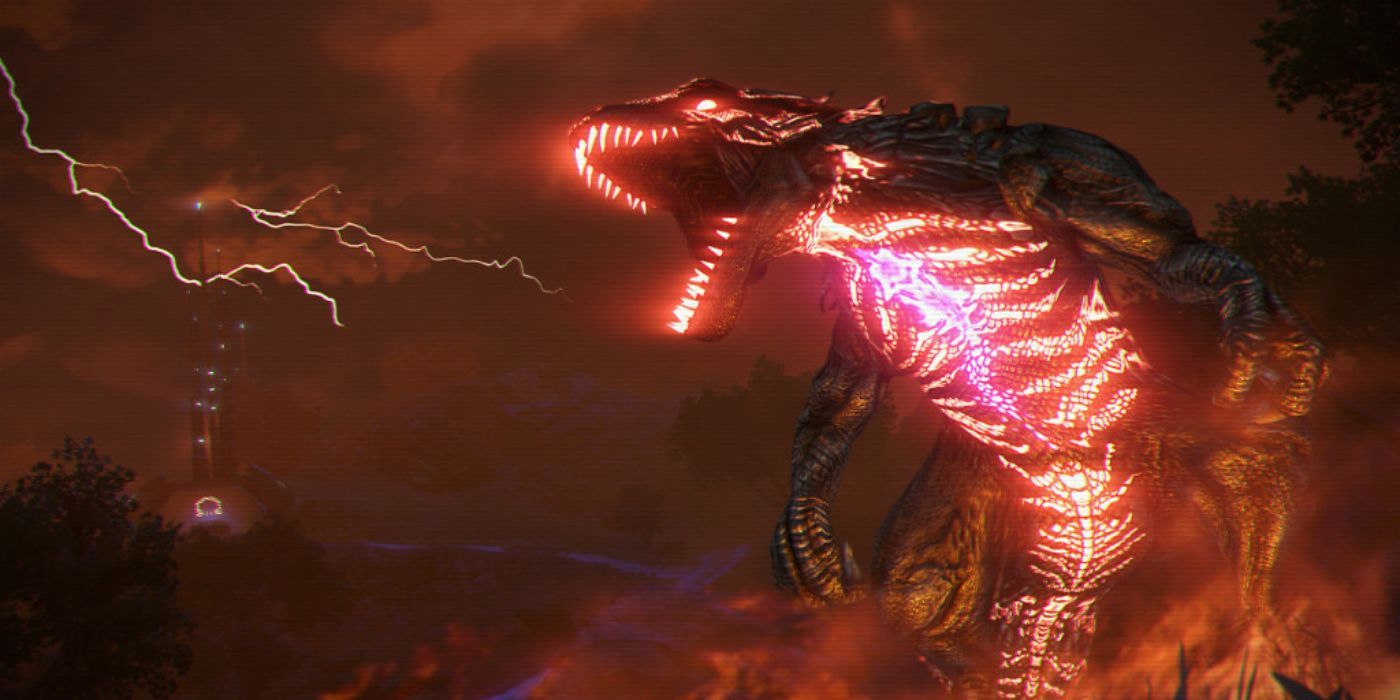
Glaurung was the original dragon, the first prototype created by Morgoth to use in his conquests, who would later be known as the “father of dragons.” He looked quite different from his descendants, notably lacking wings, but he was a force to be reckoned with. While he was easily capable of wiping out entire armies through brute force alone, his great strength was also complimented by intelligence and an unmatched capacity for magic. A simple glance from Glaurung was enough to put most people into a trance, and when that happened he could get into their minds. Like a 300ft-long Hannibal Lector, he could find the mental weaknesses of his victims and exploit them for his own amusement, often driving them into madness and despair.
Of all the dragons Tolkien came up with, Glaurung might be the most visually distinctive due to his lack of wings, which would make him feel a lot more unique if he were to appear in something. Certainly, any battle scene involving him would have to work very differently compared to Smaug or Ancalagon. Granted, this could also be an advantage, since not having to incorporate flight could potentially make such a scene easier to film or animate.
Gothmog
The Super Balrog
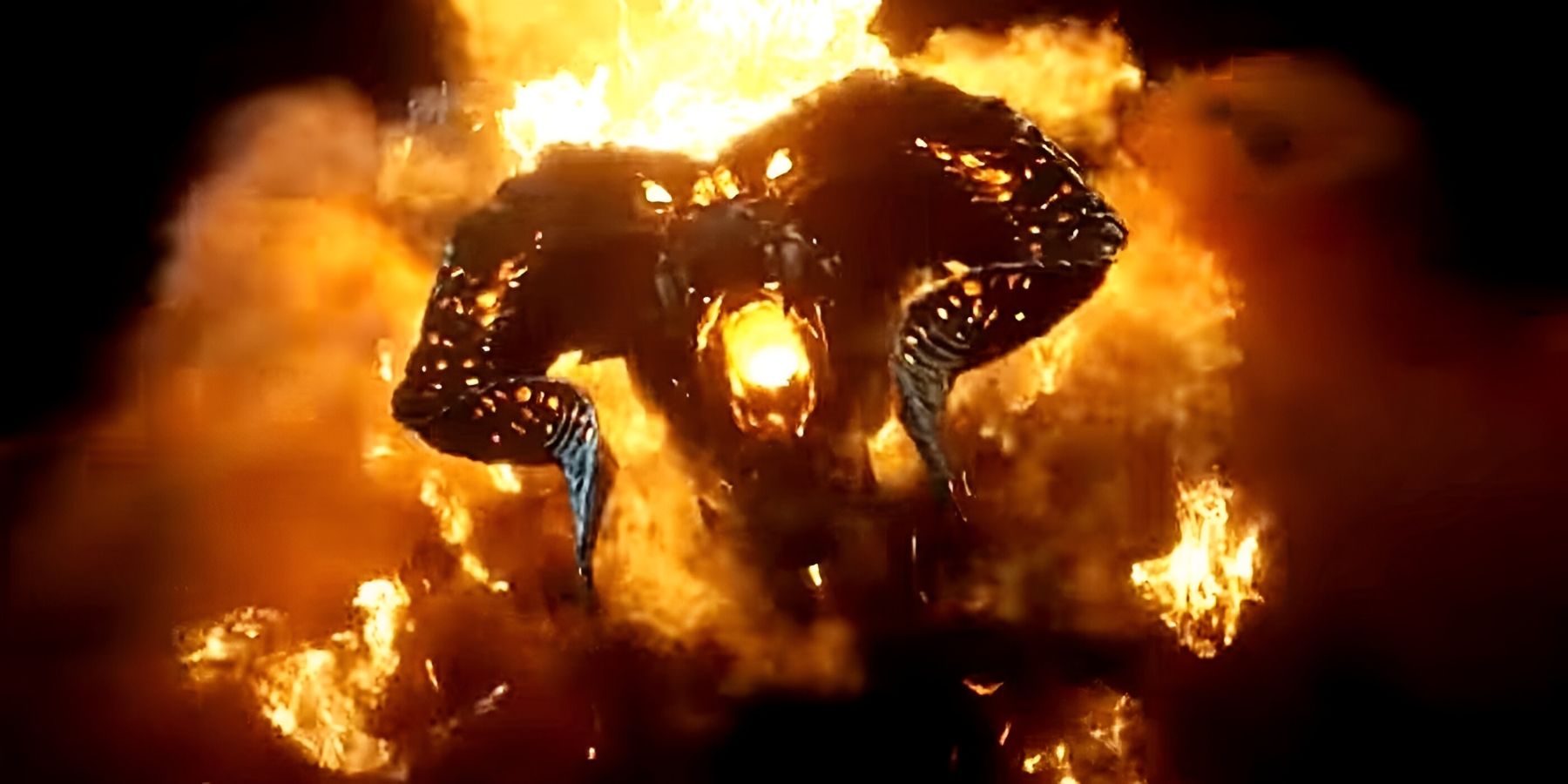
The Balrog is easily one of the most iconic creatures in The Lord of the Rings. The Giant Fire Monster was capable of single-handedly wiping out an entire Dwarven city, and nearly did the same to the Fellowship. Gandalf eventually defeated it, but only after an intense battle across Middle-Earth that resulted in his death and rebirth. Encountering just one was bad enough, but back in the olden days Morgoth had several at his disposal. The worst of them was Gothmog, Lord of Balrogs, who would have made Durin’s Bane look tame. At the time, Gothmog was a commander of Morgoth’s armies, possibly stronger than Sauron. It took the heroic sacrifice of Echthellion impaling Gothmog with his helmet and dragging him into a deep fountain to finally bring him down.
Interestingly, Gothmog is indirectly referenced in Return of the King. In both the book and the film, the Witch-King’s lieutenant is named after him. While it suggests that Sauron’s army fondly remembers the Balrog Lord thousands of years after his death, the orc commander who inherited the name obviously pales in comparison to his namesake. Gothmog would have to be like a super balrog, which would be difficult to pull off visually but could be amazing if done right.
Ungoliant
The Original Spider Queen
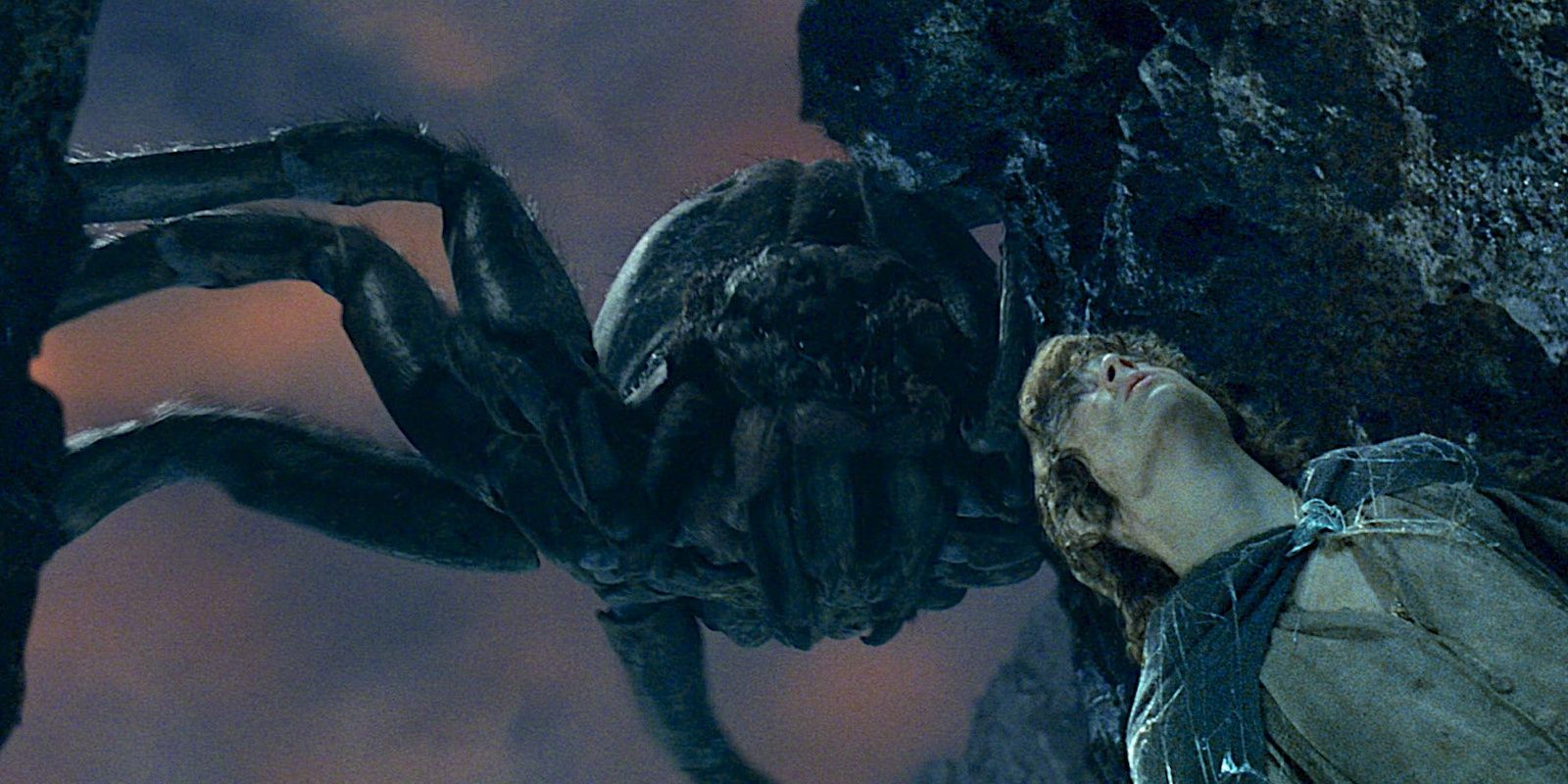
Shelob has a well-earned reputation for being one of the most terrifying creatures one can encounter. The infamous giant spider can even make orcs squirm, and she comes closer to killing Frodo and ending his quest to destroy the ring than Sauron ever could. But she pales in comparison to her mother. Ungoliant was an even bigger spider of uncertain origin, who brought about a very literal age of darkness thanks to her webs. At least Shelob’s webs aren’t thick enough to block out the sun. At one point she even became powerful enough that Morgoth was afraid of her, and it took a literal army of balrogs to stop her from killing him. All this was driven by a relentless insatiable hunger. She was said to have consumed anything in her path, which only made her hungrier and desire more.
Fortunately for Middle-Earth, it was also her undoing, if the legend that she eventually ate herself is to be believed. There could be some interesting potential to a game set during the First Age which centers around restoring the light, but there might be potential for an original story as well. Tolkien makes it clear the fate he described is an unverified legend, not an absolute fact, so there could also be a precedent for bringing her back at a point closer to The Lord of the Rings.




